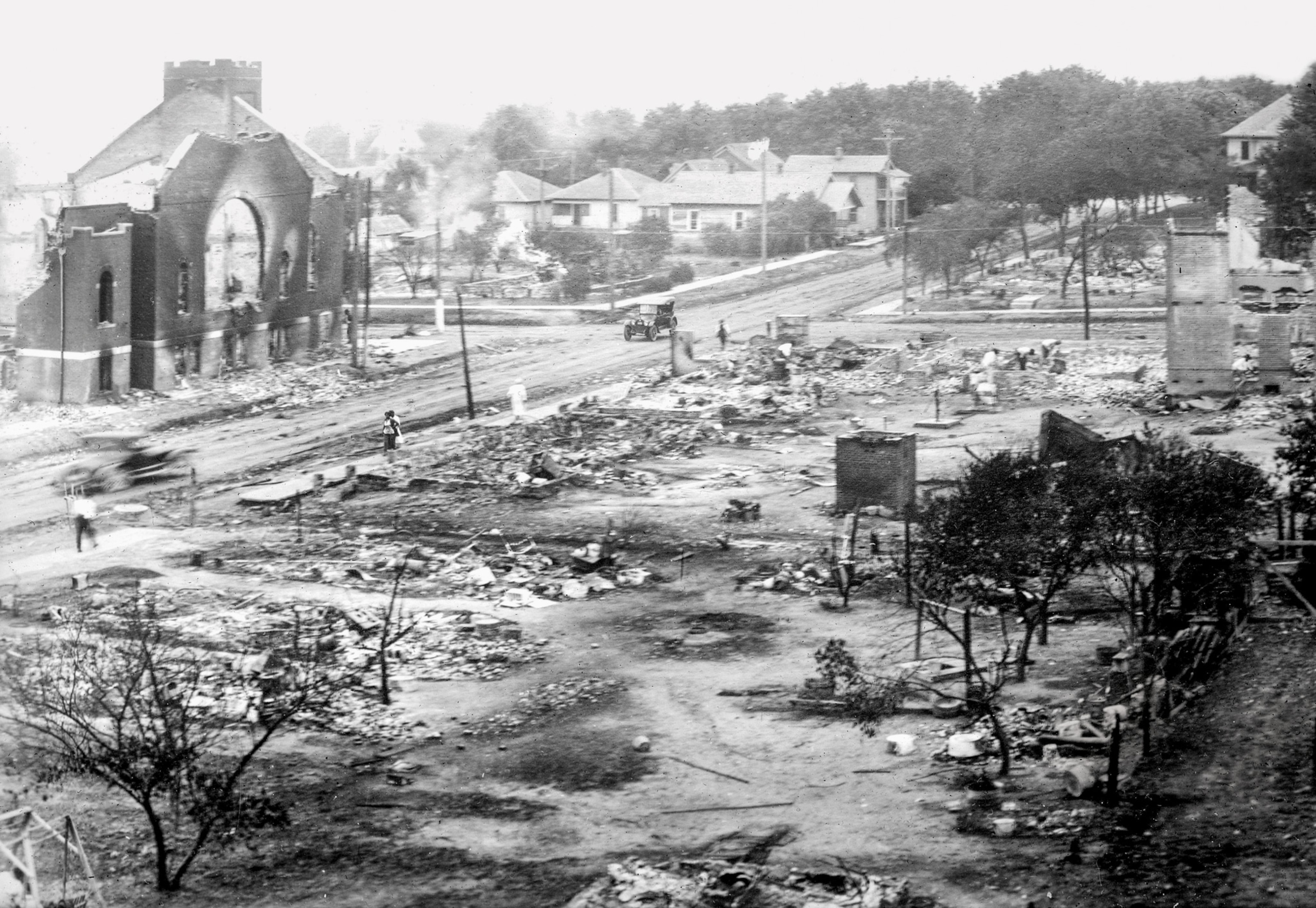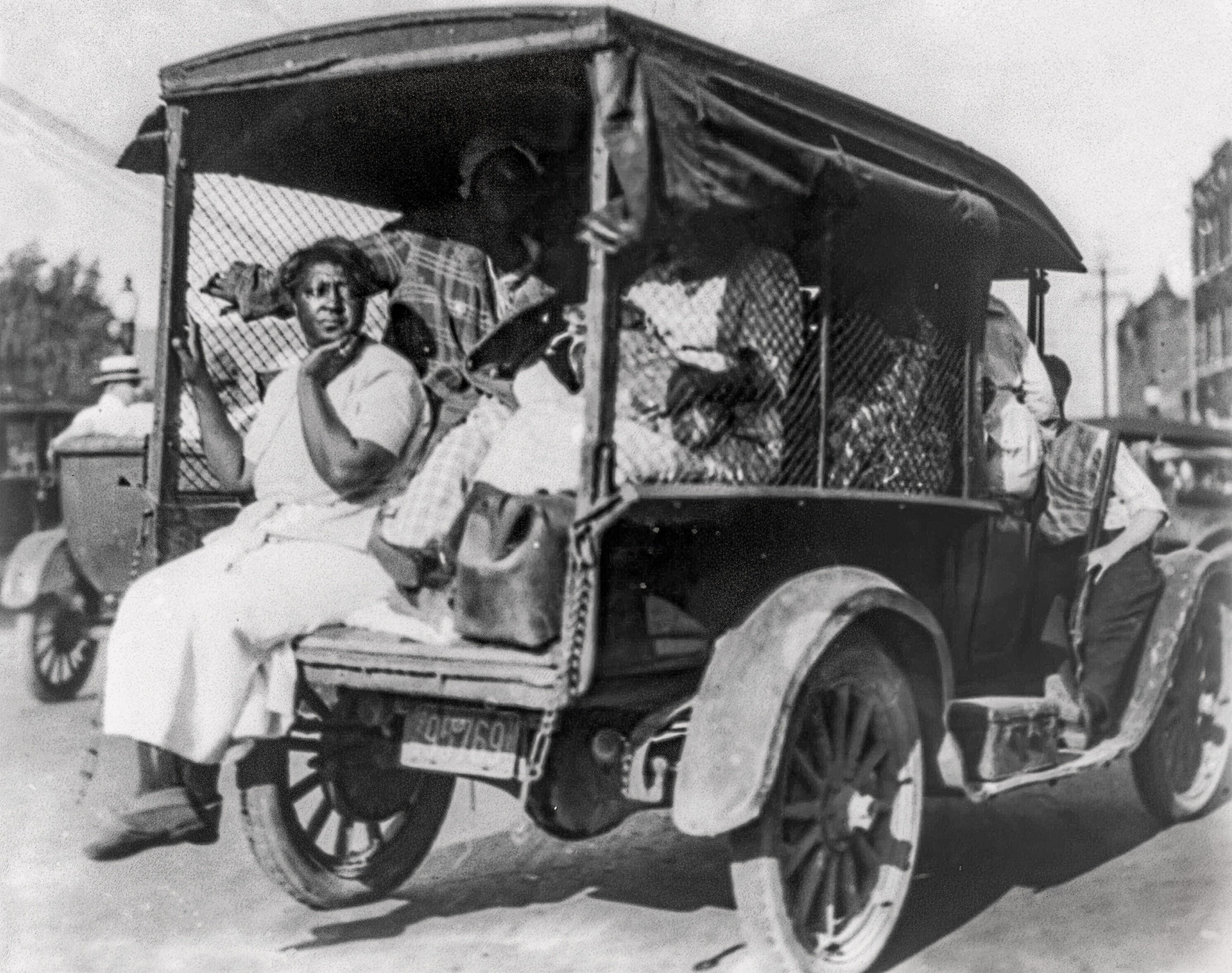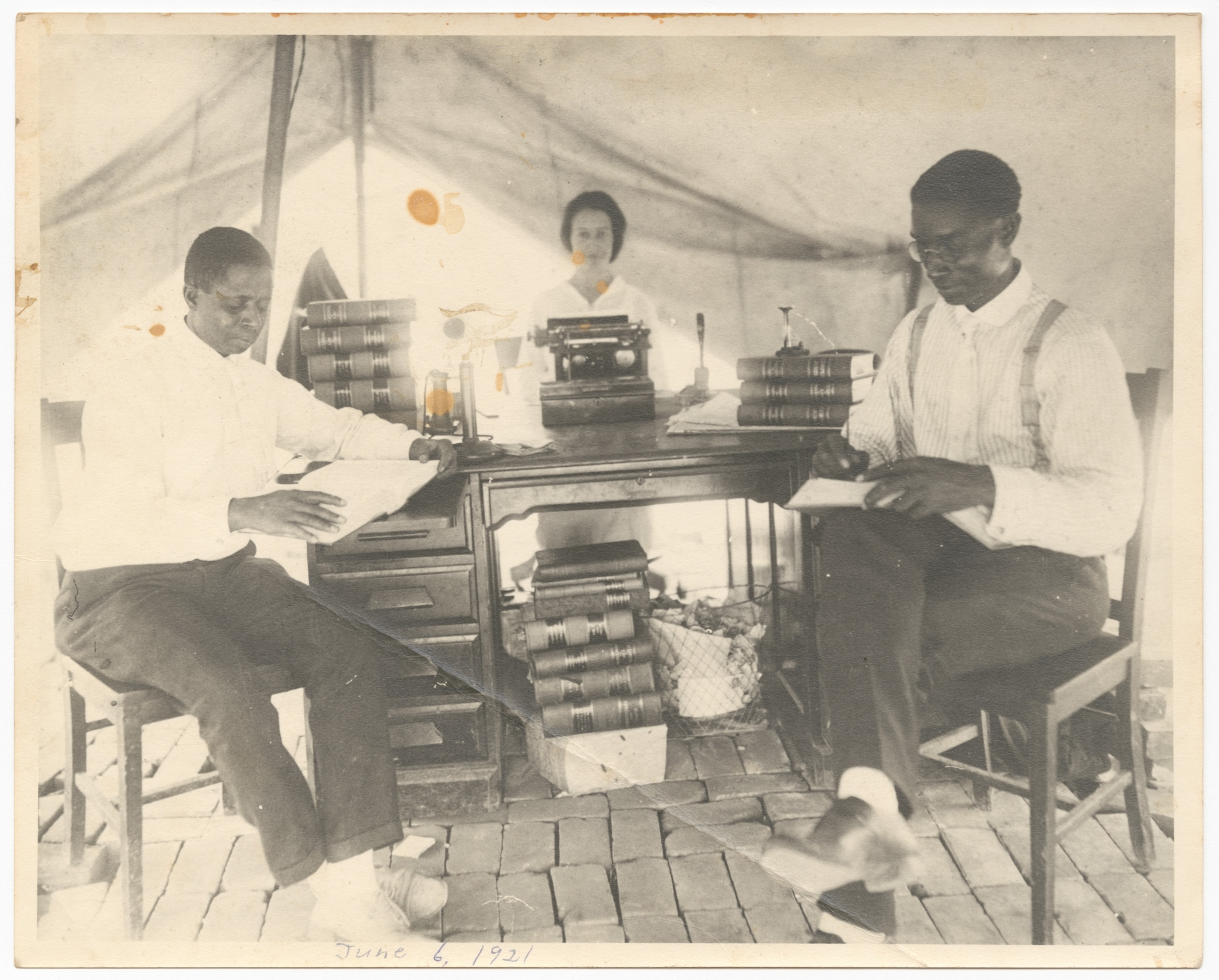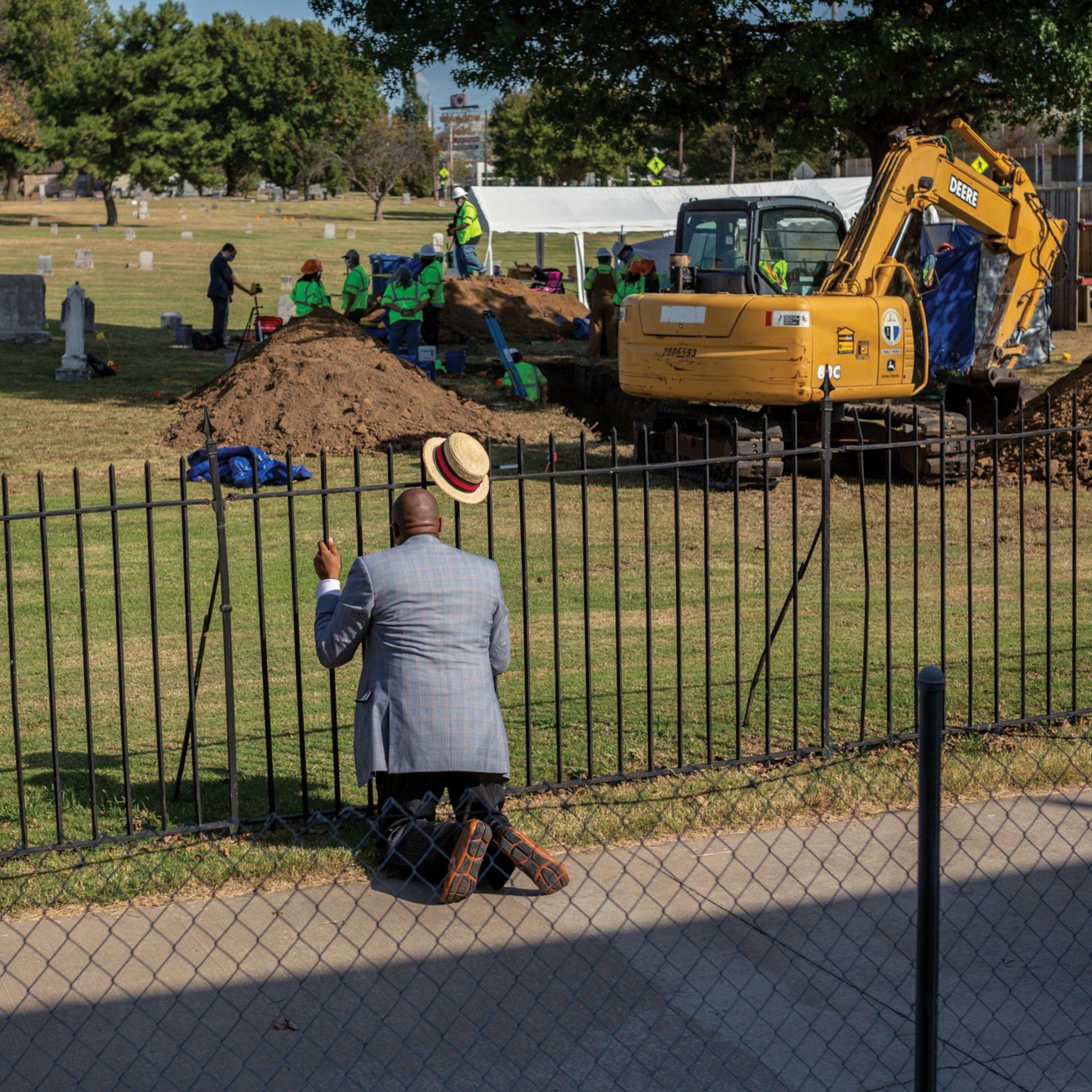Before the Tulsa Race Massacre, Black business was booming in Greenwood
Savvy entrepreneurs flocked to the boomtown of Tulsa and built a wealthy community in the 1900s, before a white mob destroyed it all in one night in 1921.

Oil was booming in the United States in the 1900s, and so was Tulsa, Oklahoma. The city grew as both the petroleum industry and its residents—Black and white—flourished.
After Oklahoma officially became a state in 1907, the legislature soon enacted Jim Crow laws and segregation policies; despite these obstacles, Tulsa became home to a vibrant 35-square block neighborhood of Black Americans called Greenwood, also known as Black Wall Street. Greenwood was an economic haven for African Americans, but this community was shattered between May 31 and June 1, 1921, when a white mob attacked the district in a horrific event known as the Tulsa race massacre.
Black boomtown
Following the Civil War, waves of African Americans left the South to relocate to other parts of the United States. In 1889 Congress made lands available in Oklahoma for settlement, and many Black people saw this as a major opportunity. One of the main architects in securing land for Black citizens in Oklahoma was O.W. Gurley.
An entrepreneur and educator who grew up in Arkansas, Gurley first moved to Oklahoma in 1893 and made his fortune in the town of Perry. The oil boom then drew him in 1905 to Tulsa, where he acquired 40 acres of land in a part of town that would be sold to “coloreds only.” In this neighborhood surrounding Greenwood Avenue and Archer Street, Gurley would open several businesses, the first of which was a boardinghouse that catered to the African Americans moving to Tulsa. He expanded his holdings to three brick apartment buildings and five town houses, a grocery store, and the Gurley Hotel. He started a Masonic Lodge and opened an employment agency. As Greenwood’s premier entrepreneur, Gurley built a relationship with white Tulsa residents and was eventually made sheriff’s deputy, charged with policing the Black population. All told, Gurley’s fortune was valued at more than $150,000, an amount estimated to be worth between $2 to 5 million today.
Birth of Black Wall Street

The Greenwood District earned its nickname "Black Wall Street" not because of banking or investment enterprises, but because of the many different kinds of successful Black-owned businesses within the neighborhood. Greenwood had two newspapers, including the Tulsa Star, pool halls, auto repair shops, beauty parlors, grocers, barbershops, and funeral homes. There was also a Y.M.C.A., a skating rink, a hospital, and a U.S. post office substation.
Between 1910 and 1920, Tulsa’s population grew from roughly 18,000 to 72,000 people, and the Black population swelled from 2,000 to more than 9,000 residents in that same time. Gurley’s entrepreneurial spirit influenced many other Greenwood residents to start their own businesses within the community, whose financial success earned it the name “Black Wall Street.”
John Williams and his wife, Loula, built a confectionary store and established the very popular Dreamland Theater. Simon Berry built a private transportation network composed of Model T Fords and buses that took people all over Greenwood and to downtown Tulsa. Berry soon began chartering planes for Tulsa’s increasingly wealthy oilmen.
One of the wealthiest men in Greenwood (and the entire country) at the time was J.B. Stradford. His largest enterprise was the Stradford Hotel, which was the largest Black-owned hotel in the United States at the time. It housed 54 suites, a gambling hall, dining room, saloon, pool hall, and barber shop. Stradford had built his hotel to be equal in luxury to the finer hotels in white Tulsa, and it stood as the monument to Greenwood’s rising success, valued at $75,000, or about $2.5 million today. All of this prosperity would be wiped out in what is believed to be the worst incident of racial violence in American history. (Explore how the massacre robbed a Black community of generational wealth.)
Violence and devastation
In spring 1921 racial tensions were running high in the highly segregated city. On May 30, a 19-year-old Black man named Dick Rowland entered an elevator in the Drexel Building, located on South Main Street in downtown Tulsa. The young white elevator operator, Sarah Page, screamed for reasons unknown (the most common explanation is that he stepped on her foot or tripped). Rowland fled the scene.
The next day, the Tulsa Tribune published an article titled “Nab Negro for Attacking Girl in an Elevator” and an editorial, “To Lynch Negro Tonight.” Rowland was arrested and taken to the courthouse to be tried. That evening, an incensed mob of white people assembled where Rowland was being held.
Rumors of lynching began to circulate throughout town and made their way to Greenwood. A group of Black men, including World War I veterans, went to the jail to protect Rowland. A struggle broke out as a white man tried to disarm one of them. A shot was fired, and chaos broke out. (White mobs massacred Black communities from Tulsa to D.C. during "Red Summer.")

Over the next several hours, white Tulsans, some armed by city officials and law enforcement, committed numerous acts of violence against Tulsa’s Black residents. Buildings were set ablaze, and unarmed people were shot at in the streets. The mob’s bloodlust grew stronger through the night as rumors grew that Blacks were organizing a counterattack, with reinforcements recruited from nearby towns with large African American populations.
As dawn broke on June 1, thousands of whites poured into the Greenwood District, looting and burning homes and businesses over the entire 35-block area. Firefighters and law enforcement who arrived to help put out fires later testified that the mob had threatened them with guns and forced them to leave. Witnesses reported seeing airplanes flying overhead and dropping kerosene bombs from above.
According to Red Cross estimates, some 1,256 houses were burned; 215 others were looted. Two newspapers, a school, a library, a hospital, churches, hotels, stores, and many other Black owned businesses were destroyed or damaged in the violence. As many as 300 people died (some estimates claim more), while more than 10,000 Greenwood residents had lost their homes.
By the time the National Guard arrived and Governor J.B.A. Robertson had declared martial law, shortly before noon on June 1, the violence was effectively over. Guardsmen put out fires and detained many Black Tulsans; by June 2, some 6,000 people were under armed guard at the local fairgrounds.

In the aftermath, insurance companies refused to pay Black citizens for the damages caused by the mob’s events. Law enforcement outlawed funerals at the time, so most who died in the violence were not given proper burials.
Gurley was not protected by his status that night. His hotel, businesses, and other properties were reduced to rubble. Rumored to have died in the massacre, he was later reported to have abandoned Greenwood after losing his fortune and relocated to Los Angeles.

Finding a lost legacy
Reports of the Tulsa massacre were intentionally omitted from American history until its hundredth anniversary neared. Stories of what happened in Tulsa during those 18 hours in 1921 began to resurface and generate interest in both the successes of Black Wall Street and the grief at its destruction. (Here's how Tulsa is finally confronting its past.)
Recent finds

In 2018 Tulsa mayor G.T. Bynum officially ordered an investigation of all remaining evidence from the massacre, including the resting place of its victims. After investigating candidate sites in 2019 with ground-penetrating radar, excavations began in 2020 in an area of Tulsa's Oaklawn Cemetery near the graves of Reuben Everett and Eddie Lockard, the only known marked graves of massacre victims in the cemetery. As of October 2020, archaeologists had discovered 12 unmarked coffins containing human remains buried in Tulsa's Oaklawn Cemetery. More potential locations in Tulsa have been identified, and searching for the unmarked burials will continue as of this writing.
In 2018 Tulsa Mayor G.T. Bynum began an investigation into locating the remains of the massacre victims (as of this writing, 12 people have been found; work is ongoing). As family members and descendants reckon with the painful anniversary, perhaps the work to uncover the true story can help bring a sense of closure, even 100 years after the massacre.
Hear Tucker Toole tell his story in Overheard at National Geographic's "A Reckoning in Tulsa," which looks back at the massacre, the efforts to erase it from history, and the ongoing work to reveal what really happened in May 1921.








